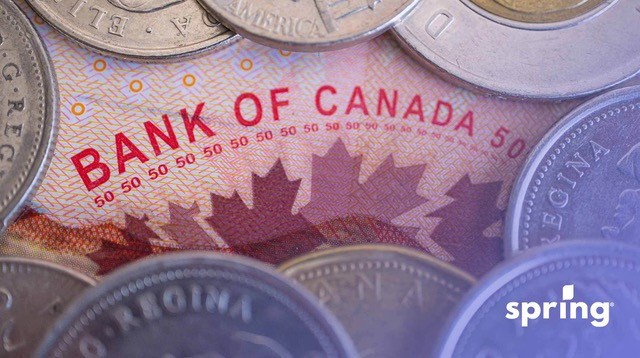Before we get too far into what the capital gains changes in Canada are, let’s go over what capital gains are and who this will affect. It may affect more people in Canada than you think.
What Are Capital Gains?
Capital gains realized happen when you sell an asset for more than the Adjusted Base Cost. The Adjusted Base Cost is the purchase price of the home as well as any other costs, including commissions and legal fees. These types of assets are called capital property and include:
- Stocks
- Bonds
- Precious metals
- Real estate
That said, when you sell an asset, you don’t always earn capital gains. In some cases, you actually incur capital losses. This happens when you sell the asset for less than the Adjusted Base Cost. These capital losses can offset your capital gains and reduce your taxation. The great thing about capital losses is that they never expire. You can use them for the three preceding years or at any time in the future.
When it comes to capital gains, it’s important to note that not everything that earns interest or income is considered to earn capital gains. Qualified disability trusts and most trusts don’t have to go through capital gains taxation; they use graduated rate estates.
Capital Gains Taxes: Current Vs Changes
Currently, when it comes to capital gains taxes, you pay tax on 50% of your capital gains. For example, let’s say your capital gains are $100,000; you’d then pay tax on 50% of that, which is $50,000.
As of June 15, 2024, according to the federal budget and the deputy prime minister, the liberal government announced that the inclusion rate for capital gains above $250,000 had increased. This new inclusion rate is now 67%. However, the new rules don’t affect all capital gains under $250,000, some will still have the only inclusion rate of one half. The inclusion rate increase doesn’t affect personal capital gains under $250,000. Those will still get the benefit of the lower tax rate on your income taxes.
Who the Capital Gains Tax Affects
According to the government of Canada, this change to the tax system will mostly affect the wealthiest 0.13%, 12% of corporations and independent businesses in Canada and those with an income of $1.42 million annually or higher, which is supposed to increase economic growth. That said, though, there’s a chance it can impact many middle-class Canadians.
The reason that this may impact middle-class Canadians is the sale of property. While you don’t pay capital gains when you sell your primary residence as long as it’s been your primary residence every year since you’ve owned it, if you’ve ever rented out your home, then you will.
It can also affect those who have a rental property or vacation home. If you sell either of those properties, then you’ll notice that you have to pay the increased inclusion rate if your capital gains are above $250,000.
Those who are going to notice the changes the most are corporations and business owners. This is because the rate changes fully for them. They don’t get the option on the inclusion rate of 50% at all. The two thirds then becomes their overall inclusion rate.
What are the Capital Gains Changes?
According to the Minister of Finance, Chrystia Freeland, while the new capital gains changes are reflected in the budget bill, they’re still set to be implemented as of June 15, 2024. This means that the new inclusion rate of 67% is still coming into effect even though it wasn’t included in the budget implementation bill. According to the government, this budget legislation is supposed to bring in over $19 billion in tax revenues over the next 5 years.
There are many different reasons that the federal government has chosen to implement this bill as of June 25, 2024. According to the Canadian press, raising this rate is necessary to pay for other essentials in other parts of the budget. They also claim that this helps to ensure fairness for all generations and that it’s absolutely fair to ask those who earn more than most Canadians to pay more in taxes. However, this could affect more than those Canadians who are in the top 1%.
Avoiding Capital Gains Tax on Property
As we’ve mentioned, the only exemption to paying capital gains tax is if you’re selling your principal property. In order for a property to be considered your principal residence, you must have lived in it every year that you owned it.
Capital Gains Exemption
When it comes to taxable capital gains, there’s a lifetime capital gains exemption. That said, this amount hasn’t been updated since 2023 when the net capital gains inclusion rate was ½. There’s no new amount with the inclusion rate change. This means that, according to the Income Tax Act, the lifetime exception limit is $485,595.re selling your principal property. In order for a property to be considered your principal residence, you must have lived in it every year that you owned it.
The Difference Between Capital Gains and Interest Income
Determining what kind of income you’re earning can be slightly confusing. Let’s take a look at the different kinds of investment income and how they differ.
Interest Income
Interest income is the income earned on assets such as bonds and GICs. Interest income is taxed at the same marginal rate as your other taxable income. You should receive tax forms for any interest income you earned on investments during the tax year and pay the tax on that interest when you do your annual tax return.
Dividend Income
Dividend income is different than interest income. Dividends are essentially income that’s distributed to shareholders. If you own stocks and they’re distributed to you, these are then taxed at a lower rate than interest income. In Canada, you can even qualify for the dividend tax credit.
Capital Gains
Capital gains are income earned from the sale of a property or asset. Anything you receive above the purchase price that you paid for the asset is considered capital gains and is taxed accordingly. Whether you pay tax on 50% of the capital gains or 67%, it’s all taxed at the marginal rate.
Marginal Tax Rates in Canada
As we already discussed, in Canada, the amount that you pay for capital gains taxes is based on your marginal tax rate. Your marginal tax rate is based on your annual taxable income amounts as well as the province that you live in. Let’s take a look at both the federal tax rate and the provincial tax rates.
Federal Tax Rates
| Taxable Income Amounts | Marginal Tax Rate |
| On the portion of the income from $0 – $57,375 | 14.5% |
| On the portion of income, that’s $57,375 – $114,750 | 20.5% |
| On the portion of income that’s $114,750 – $177,882 | 26% |
| On the portion of income that’s $177,882 – $253,414 | 29% |
| On the portion of income, that’s $253,414 plus | 33% |
Provincial Tax Rates
| Provinces/Territories | Tax Rates |
| British Columbia | 5.06% on the first $49,279 7.07% on the next $49,281 10.5% on the next $14,598 12.29% on the next $24,249 14.70% on the next $48,889 16.80% on the next $73,523 20.50% on amounts over $259,829 |
| Alberta | 10% on the first $151,234 12% on the next $30,247 13% on the next $60,493 14% on the next $120,987 15% on amounts over $362,961 |
| Saskatchewan | 10.5% on the first $53,463 12.5% on the next $99,287 14.5% on amounts over $152,750 |
| Manitoba | 10.8% on the first $47,564 12.75% on the next $53,636 17.4% on any amount over $101,200 |
| Newfoundland and Labrador | 8.7% on the first $44,192 14.5% on the next $44,190 15.8% on the next $69,410 17.8% on the next $63,118 19.8% on the next $61,304 20.8% on the next $282,215 21.3% on the next $564,429 21.8% on any amount over $1,128,858 |
| Nova Scotia | 8.79% on the first $30,507 14.95% on the next $30,508 16.67% on the next $34,868 17.5% on the next $58,677 21% on amounts over $154,650 |
| Prince Edward Island | 9.8% on the first $33,328 13,8% on the next $31,328 16.7% on the next $40,344 18% on the next $35,000 18.75% on amounts over $140,000 |
| Ontario | 5.05% on the first $52,8669. 15% on the next $52,889 11.16% on the next $44,225 12.16% on the next $70,000 13.16% on amounts over $220,000 |
| Quebec | 15% on the first $53,255 20% on the next $53,240 24% on the next $23,095 25.75% on amounts over $129,590 |
| New Brunswick | 9.68% on the first $51,306 14.82% on the next $51,308 16% on the next $87,446 19.5% on amounts over $190,060 |
| Northwest Territories | 5.9% on the first $51,964 8.6% on the next $51,966 12.2% on the next $65,037 14.05% on amounts over $168,967 |
| Yukon | 6.4% on the first $57,375 9% on the next $57,375 10.9% on the next $63,132 12.83% on the next $75,532 12.8% on the next $246,586 15% on amounts over $500,000 |
| Nunavut | 4% on the first $54,707 7% on the next $54,706 9% on the next $68,468 11.5% on amounts over $177,881 |









